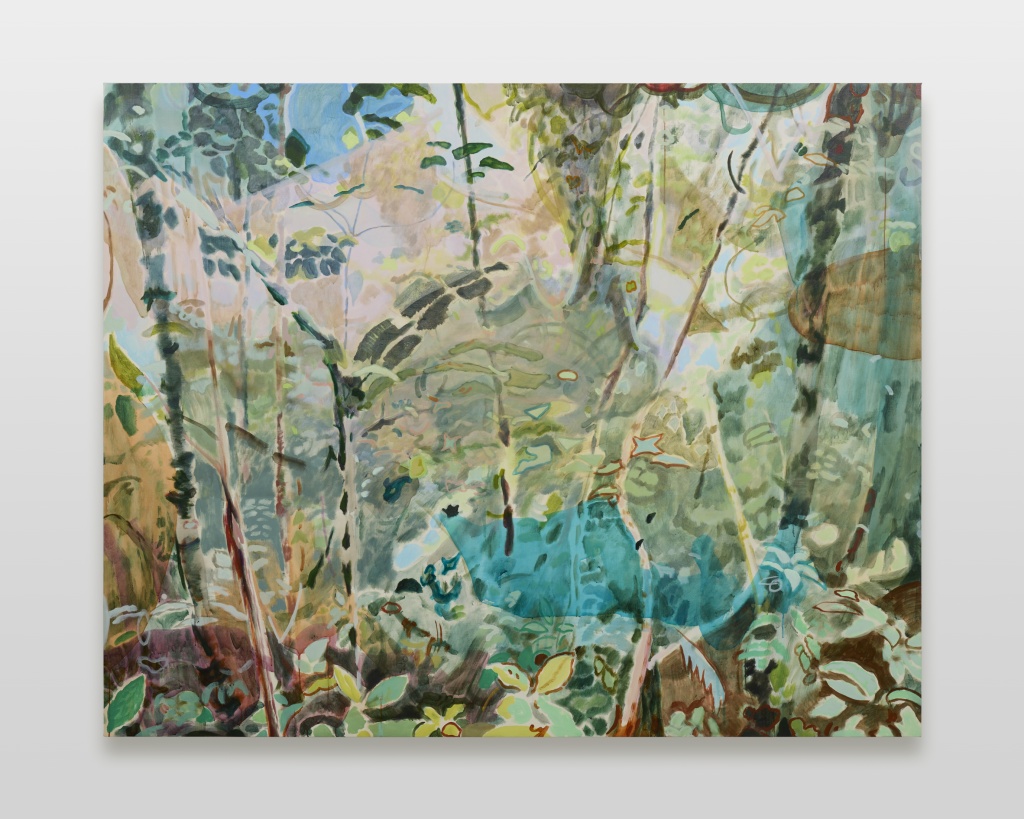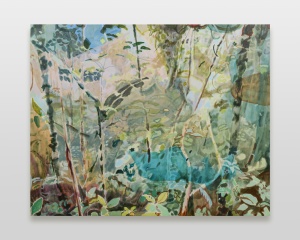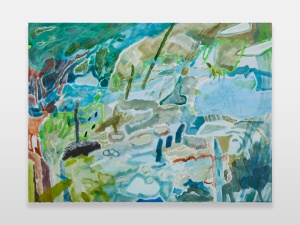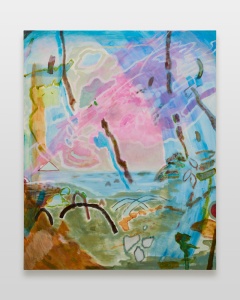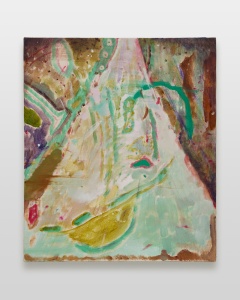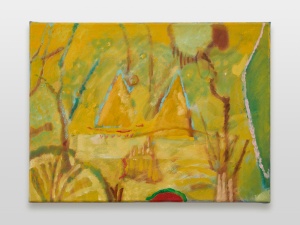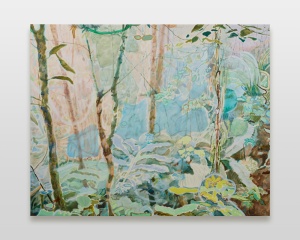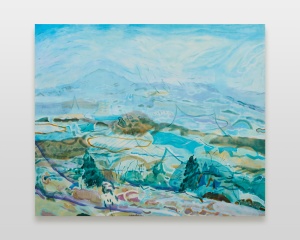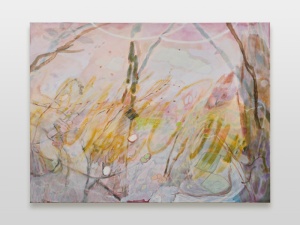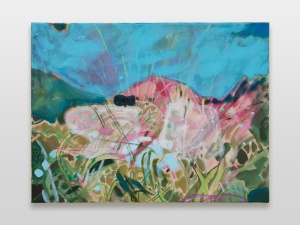Tomio Koyama Gallery Maebashi is pleased to present Yuka Kashihara’s solo exhibition “Pile of signs.”
【About Yuka Kashihara and Her Works: Faraway worlds beyond time and space, where the dense and translucent, the imaginary and reality coalesce】
In Kashihara’s works, layers of dense yet translucent colors such as blue, pink, green, and brown are applied in bold touches to vividly convey the fundamental energies of the earth. What come to manifest are faraway worlds beyond time and space, where the imaginary and reality coalesce.
Kashihara interweaves the impressions gained from her visits to virgin forests in Japan and abroad, her experiences in Germany where she had lived for a long time, and inspiration from various landscapes with her own memories, thereby depicting imagined landscapes of forests, lakes, mountains, caves, and geological formations that seem to belong to no specific place nor time. Among them, lakes in particular are an important motif for the artist. Taking inspiration from a phrase in Noriko Ibaragi’s poem, “Every human being should have place for a calm and silent lake within the depths of their heart,” the artist expresses her desire to harbor a lake within herself, and continue envisioning her ideal lake.
What appears to be depicted within her works are serene worlds devoid of all human and animal presence. However, deep within the earth lies magma, thus evoking a world seemingly connected to the universe, and offering viewers with the peculiar sensation of glimpsing into another dimension. Multiple perspectives coexist within Kashihara’s works, including her own perspective and ones that may be observed by others, as well as a bird’s-eye views from inside and outside. Furthermore, through a repeated process of trial and error, her paintings at times transform completely from one day to next, as new images are added on top of another. This incorporation of multiple perspectives within a single painting, coupled with changes within the picture plane and the overlap of time, serve to infuse her work with a unique sense of strength and quiet chaos.
Shuji Takashina, art critic and professor emeritus at the University of Tokyo, has commented on Kashihara’s works, stating, “When looking at these works, we are witnessing the story of a remarkable painter’s endeavors in creating the world.” (Shuji Takashina, “The Story of Yuka Kashihara’s Creation of the World,” First Island – Last Mountain, exhibition catalogue, Ohara Museum of Art, 2016)
【About the Exhibition and Works: The Brilliance of the Time Accumulated in the River Terraces of Numata, A New Challenge to Visualize the Subconscious】
Kashihara states as follows with regards to the exhibition.
When I was a child, I had a fascination for all things old and tangible. I was the kind of child who would spend all my time gazing at things like my uncle’s mechanical SLR camera, alcohol lamps, and my grandfather’s leather shoes. I had dinosaur encyclopedias and picture books of traditional Japanese ghosts and supernatural creatures bought for me on my birthdays, and I drew pictures while imagining the times and places in which they might have existed.
When I moved to Germany, I visited flea markets to collect postcards written by people hundreds of years, and I liked to look at them at home, thinking about their handwriting, stamps, and the times in which they were written.
Painting, while contemplating over and over again about the traces, accumulations, layers, ambiguities, and uncertainties of the time that may have existed, is indeed like attempting to seek light within that time.
In producing her new work, Kashihara traveled to Gunma prefecture, the site of this exhibition, and visited the river terraces in the city of Numata. Kashihara states that the unique geological formations had appeared to visualize the accumulation of time, and glistened as if floating against the blue January sky where traces of snow remained. In her work “River Terrace, the scenery she witnessed with her own eyes on this occasion and the images that came to her mind, are made to coexist in an intermixed manner.
“Urzeit” (Primeval Times) is based on Kashihara’s experience of climbing the 4200-meter-high Mount Kinabalu in Kota Kinabalu, Borneo Island. The work perfectly captures the light and freshness of the thick jungle, and while being based on an actual landscape, demonstrates a new, more abstract direction for her oeuvre.
Through Kashihara’s works, we are reminded of the sense of eternity that we are indeed surrounded by the great natural universe—something we tend to forget as we go about our daily lives. We hope viewers will take this opportunity to engage with the artist’s latest endeavors.
—————————————————————————————–
For press inquiries, please contact: press@tomiokoyamagallery.com (Makiko Okado)
—————————————————————————————–

